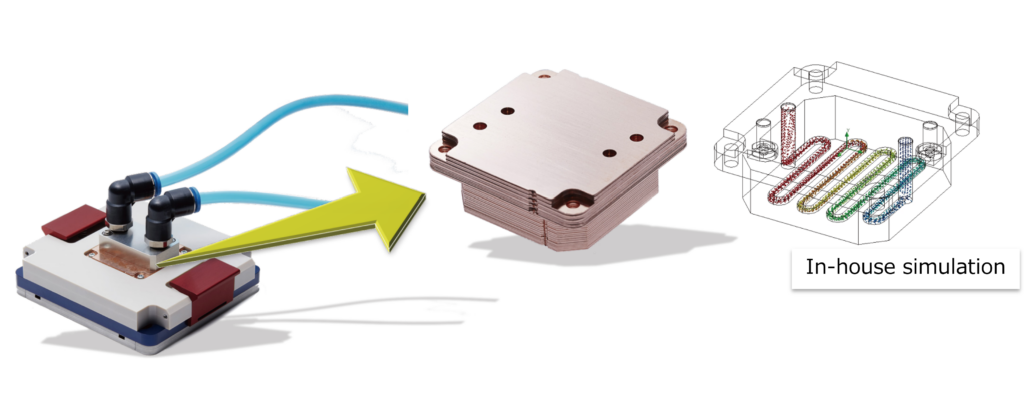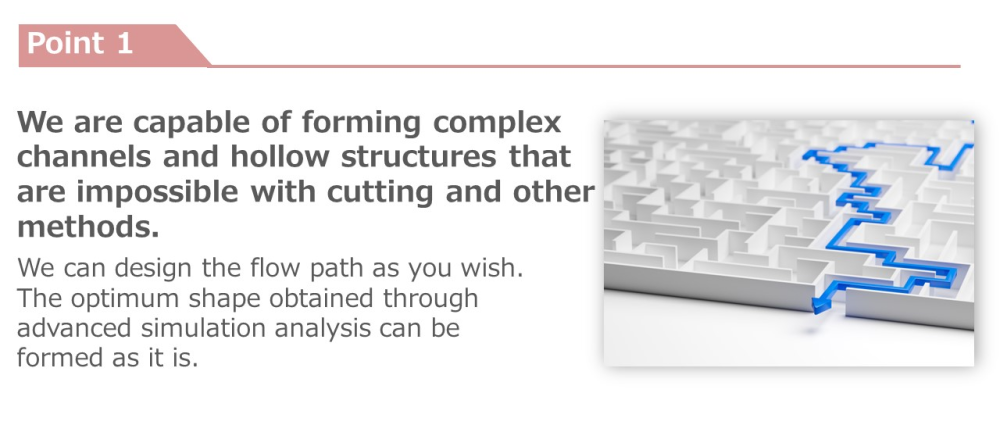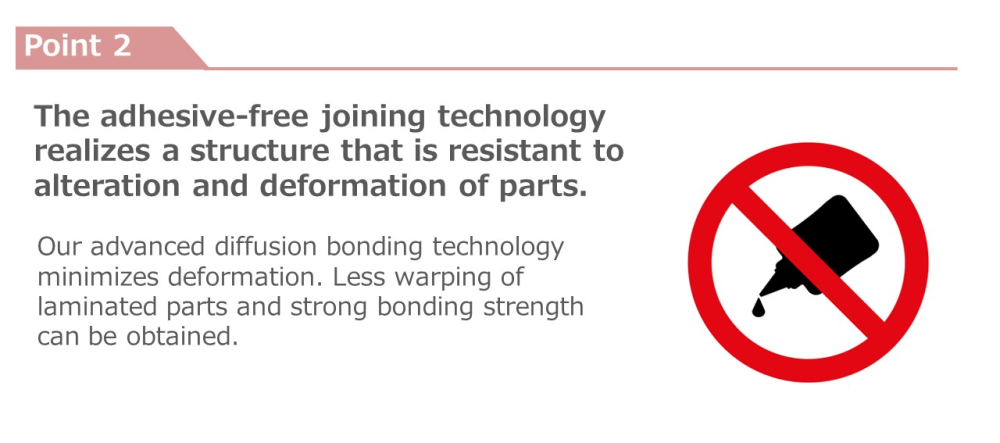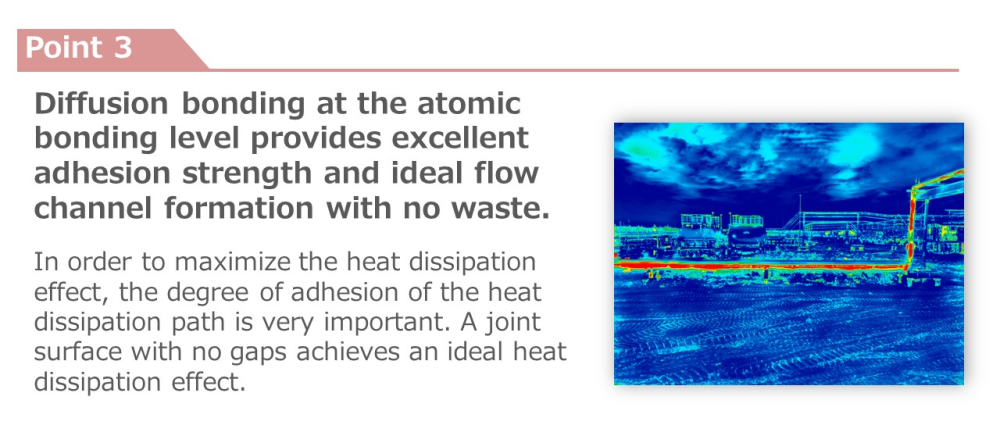Cooling Tech™
Microfluidic structure Cooling Tech™ created by etching + diffusion bonding The next generation of thermal control.
Thermal solutions with microfluidic structures
The sophistication of precision equipment is a battle against heat.
With the shift to 5G in information and communication equipment, various components are becoming more precise and complex, and this, combined with the increasing integration of components and the decreasing heat dissipation capacity of the components themselves, has led to an increase in the amount of heat generated. From small precision devices such as smartphones to large equipment such as data centers, heat generated from semiconductors and other electronic components are dissipated (released to the outside air) to maximize quality and product life.
The most common way to protect equipment from thermal stress is to deposit heat in metal and release the heat into space through the air or water. The design of the metal, its volume, surface area, air, and fluid path are the keys to the structure (heat sink) that releases the heat to the outside air, thereby efficiently dissipating the heat and protecting the equipment from heat stress. Manufacturing methods vary. UPT solves this thermal problem with a microfluidic structure (a process that forms heat conduction channels inside the metal).
The appearance of this heat sink is very simple, but it creates very complex air and liquid pathways inside that are not possible with other methods. The combination of etching and diffusion bonding is what makes UPT's proposal possible. A simple yet powerful heat sink that solves the problem of heat generation by etching and diffusion bonding.
Issues with using heat sink
Large size
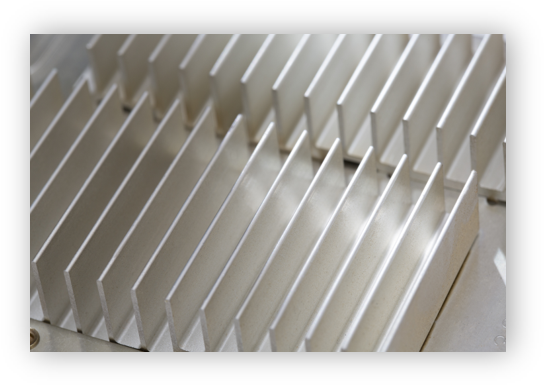
If you try to increase the heat dissipation capacity, the structure cannot be complicated, and the volume and area tend to increase.
Heat sink + Thermal plus one
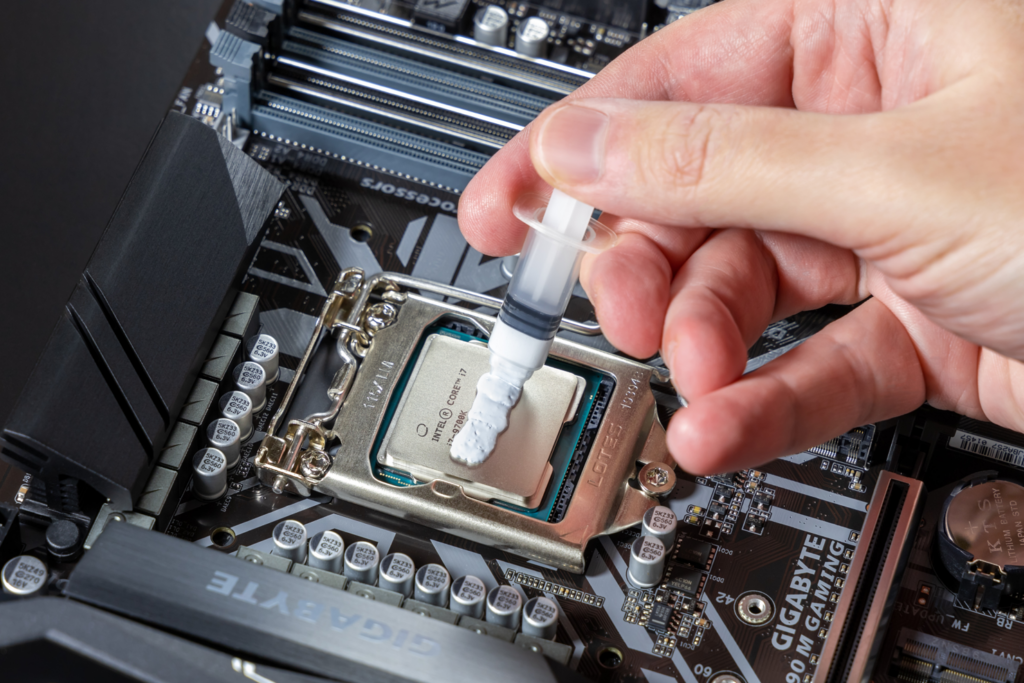
In order to dissipate heat efficiently, a thermal sheet is used in addition to a heat sink to enhance heat dissipation.
Proposal
We can solve complex channel formation with our microfluidic structure using the "etching + diffusion bonding" method.
Merit
- Since complex heat dissipation paths can be formed, the size of heat dissipating components can be reduced.
- Since no initial equipment such as molds is required, high-performance heat dissipation design can be achieved through cut-and-try. It also contributes to shorter delivery times for mass production.
- Performance guarantee for water leakage testing is available by leak detectors.
Case study
Water-cooled Cooling Tech: Up to 1,000 layers of metal foil can be diffusion bonded.
